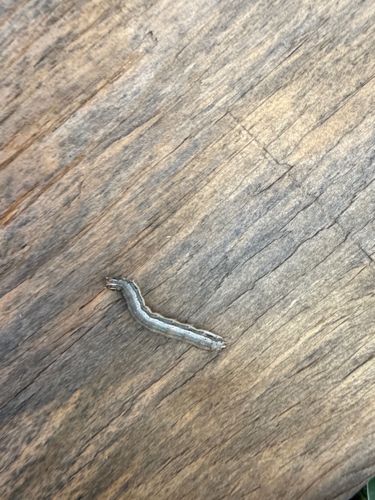Cabbage Looper (larva)
Scientific Name: Trichoplusia ni
Order & Family: Lepidoptera, Noctuidae
Size: Larvae typically grow up to 3-4 cm (1.2-1.6 inches) in length.

Natural Habitat
Agricultural fields, gardens, and other areas where host plants are abundant.
Diet & Feeding
Polyphagous, feeding on a wide variety of plants including many vegetables (cabbage, broccoli, lettuce, tomatoes, potatoes, beans, peas), field crops (cotton, tobacco, soybeans), and weeds.
Behavior Patterns
Larvae (cutworms) are nocturnal, hiding during the day in the soil or under leaf litter and emerging at night to feed. They move with a looping motion, hence the common name 'looper'. When disturbed, they often curl into a C-shape. They pupate in the soil.
Risks & Benefits
Risks: Significant agricultural pest, causing economic damage by defoliating crops and contaminating produce with frass (excrement). Benefits: Serves as a food source for natural predators and parasitoids, which can help regulate its populations in a balanced ecosystem.
Identified on: 8/11/2025